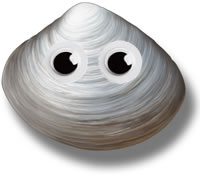
Here’s a recording in a mystery language.
Can you identify the language, and do you know where it’s spoken?

Here’s a recording in a mystery language.
Can you identify the language, and do you know where it’s spoken?
The Irish language and singing courses I’ve been doing this week finished today. Tonight there is a concert with a singer from Belfast, followed by a céilí. The week seems to have gone by quickly when I look back at it, but as I was experiencing it, it seemed to last longer.
I learnt some interesting things in the Irish language class, including proverbs, idioms, bits of grammar, and a few songs. In the sean-nós class I learned some new songs, and re-learned some old ones. Our teacher also told us about the background to the songs and the people who wrote them, which was fasciniating.
As well as speaking plenty of Irish this week, I’ve also spoke some Russian, French, Breton, Welsh and Scottish Gaelic. I can understand most of the Irish I hear, though find songs in Irish more difficult to follow. I can sing them, but don’t necessarily know all the words. This is partly because songs, especially the sean-nós ones, often include obscure words and dialect variations.
Spot the sheep
Tomorrow I’m off to Dublin, then I’ll return to Bangor on Sunday.
Yesterday morning I studied some more Swedish, Danish and Russian, did a bit of work, and went for a walk around the misty glen.
In the afternoon we saw an interesting film in Irish – Ag Lorg Annie (Searching for Annie), which was made for the BBC by Kevin Magee, who is studying Irish here this week. The film is about a painting of a local girl, Annie McGinley, that was painted in the 1920s by the American artist, Rockwell Kent, who spent quite a bit of time in this area. Kevin wanted to find out more about the painting and where the original is now. He found the painting in a private collection in New York, and other paintings by Rockwell Kent in St Petersburg.
In the evening the local chapel was packed for a concert by Anúna, an Irish choir who sing beautiful arrangements of songs in Irish, English, Latin, Spanish. They specialize in old songs, and the oldest they sang last night was written in the 9th century, and sounded angelic.
There was another concert after that in Oideas Gael featuring Sean Mac Corraidh from Belfast, his daughter, and a singer from Tory island. They sang traditional Irish songs, and told some interesting stories.
In the Irish language class we talked about verbs and other things this morning, and in the sean-nós class this afternoon we learnt four songs, three of which were already familiar to me. This evening there is a talk about Féiniúlacht agus Teanga (Identity and Language) by a lecturer in psychology from Dublin.
After quite a long journey, I arrived on Glenn Cholm Cille last night. I met some people I know on the way and spent much the journey chatting with them, so it didn’t seem so long. We talked in a mixture of Irish and English, with odd bits of German and Spanish. Last night I also spoke quite a bit of French. I found at first that Scottish Gaelic kept interfering with the other languages, especially Irish. Now I’m in Irish mode though.
As the bus went further north and west into Donegal the mist and rain came down, and by the time we arrived in Gleann Cholm Cille, the mountains had disappeared. Hence the title of this post.
Here are some photos of Gleann Cholm Cille from previous visits. The ones I took today of the misty geln are not online yet, but will appear soon.
I’m here for the Irish Language and Culture Summer School (Scoil Samhraidh Teanga agus Cultúir) at Oideas Gael, the Irish language and culture centre I’ve been to for a week or two every summer since 2005.
There will be Irish language classes in the mornings, a choice of cultural workshops in the afternoons, and various events in the evenings – concerts, talks, music sessions, and so on.
One new worksop this year is an introduction to Welsh. Quite a few of my friends here have said they’re interested.
There are also a couple of film crews here who will be interviewing people during the week.
I plan to interview a few people about their Irish learning adventures for the next episode of my podcast.
Today we have a guest post provided by E Sproston
The RAF has an exciting new video to show what the Intelligence Analyst (Linguist) role is all about.
As an RAF Intelligence Analyst (Linguist) you will interpret foreign language transmissions using state-of-the-art surveillance systems, providing vital intelligence to support military forces deployed around the world.
No prior language qualifications required, we will test your ability to learn a language. If your application is successful we will teach you from scratch!
For more information or to apply go to https://www.raf.mod.uk/recruitment/roles/roles-finder/intelligence/intelligence-analyst-voice

If you’re really happy, you might say that you’re as happy as a clam, as happy as a sandman or as happy as larry.
The expression as happy as a clam is thought to be a shorter version of the phrase “as happy as a clam at high water”, which first appeared in print in 1844 in The Adams Sentinel, a newspaper in Pennsylvania. By 1848 is was fairly well known, especially along the coast of New England, where clams are common.
Why is a clam happy at high water? Possibly because high water, or high tide, is when they are safe from predators.
The sandboy in as happy as a sandboy refers to the men who delivered sand in the 18th and 19th centuries in the UK. The phrase first appeared in print in 1821 in Pierce Egan’s Real Life in London.
The expression as happy as larry first appeard in print in 1875 in the work of G L Meredith, a writer from New Zealand. Nobody know who Larry was or why he was so happy. One theory is that Larry was Larry Foley (1847-1917), an Australian boxer who never lost a fight. Another is that it come from the slang term larrikin, a word of Cornish origin that refers to a hooligan who likes to lark about.
Other versions of this expression include:
– as happy as a dog with two tails
– as happy as a lark
– as happy as the day is long
– as happy as a pig in muck
Do you know any others?
Equivalent expressions in Scottish Gaelic include:
– cho sona ri bròig = as happy as a shoe
– cho sona ri caimeanach an t-sruth = as happy as the giant of the stream
– cho sona ri cuthag ann an nead a coimhearsnaich = as happy as a cuckoo in its neighbour’s nest
– cho sona ri luch ann an lofa = as happy as a mouse in a loaf
– cho sona ri bó ann an loch = as happy as a cow in the loch (lake)
– cho sona ri óthaisg = as happy as a ewe
– cho sona ris an rìgh = as happy as the king
– cho sona ri cat a’ gabhail na gréine = as happy as a cat taking the sun
Are there similar expressions in other languages?
Sources: The Phrase Finder, Mo bhloga, SMO Gàidhlig / Gaeilge Corpus

Here’s a recording in a mystery language.
Can you identify the language, and do you know where it’s spoken?
Skye is quite a multilingual place with residents and visitors from around the world. During the past few days I’ve met people from a variety of countries, and have spoken quite few different languages, including Scottish Gaelic, Irish, French, German, Swedish, and a bit of English. There are also speakers of Scots, Italian, Finnish and Japanese here, and there are people in the song class who have studied Old Norse, Old English, and Ugaritic.
On Tuesday night I met a guy from New Mexico who is a native speaker of Navajo – his wife has Scottish roots and is studying Gaelic here while he has a holiday. I asked him if he could record a few things in Navajo for me, but he said he can’t read the language very well, so would find it difficult to read them from Omniglot.
Last night there was an epic music session in the bar with lots of tunes and songs – I sang a few of my own songs, which went down well, and others sang in Scottish Gaelic, Irish, Scots and English. When I left the bar at 2am the session was still going, and apparently carried on until at least 4am. So many of us are feeling rather tired today.
Today we recorded a few songs in the college’s recording studio for the people who are doing the sound engineering course. I’m looking foward to hearing the recording.
The end of course cèilidh takes place tonight, and each class will be doing their party piece. Most will be singing, and the song class will be doing five songs.
I arrived safely at Sabhal Mòr Ostaig (SMO) last night. It was raining a bit when I arrived on Skye, and the skies were cloudy this morning, but this afternoon the sun came out and its rather warm.
There are quite a few different courses happening here this week, including Gaelic language at various levels, Gaelic for Irish speakers, Gaelic song, and accordion. There was a wine and cheese welcome event last night, and I saw a few people who I know from previous visits to SMO, and met some interesting new people. I spoke some Scottish Gaelic, and quite a bit of Irish and English.
The courses started today, and in the song class we learnt seven songs. I knew some of them already, or had at least heard them before, so they were relatively easy, but others were new to me. The theme of the class is songs from Lewis, one of the Western Isles off the west coast of Scotland. Our tutor, Christine Primrose, is a renowed Gaelic singer from Lewis, and is full of fascinating stories about the songs we’re learning, about the people who wrote them, and about the times when they were written.

Here’s a recording in a mystery language.
Can you identify the language, and do you know where it’s spoken?